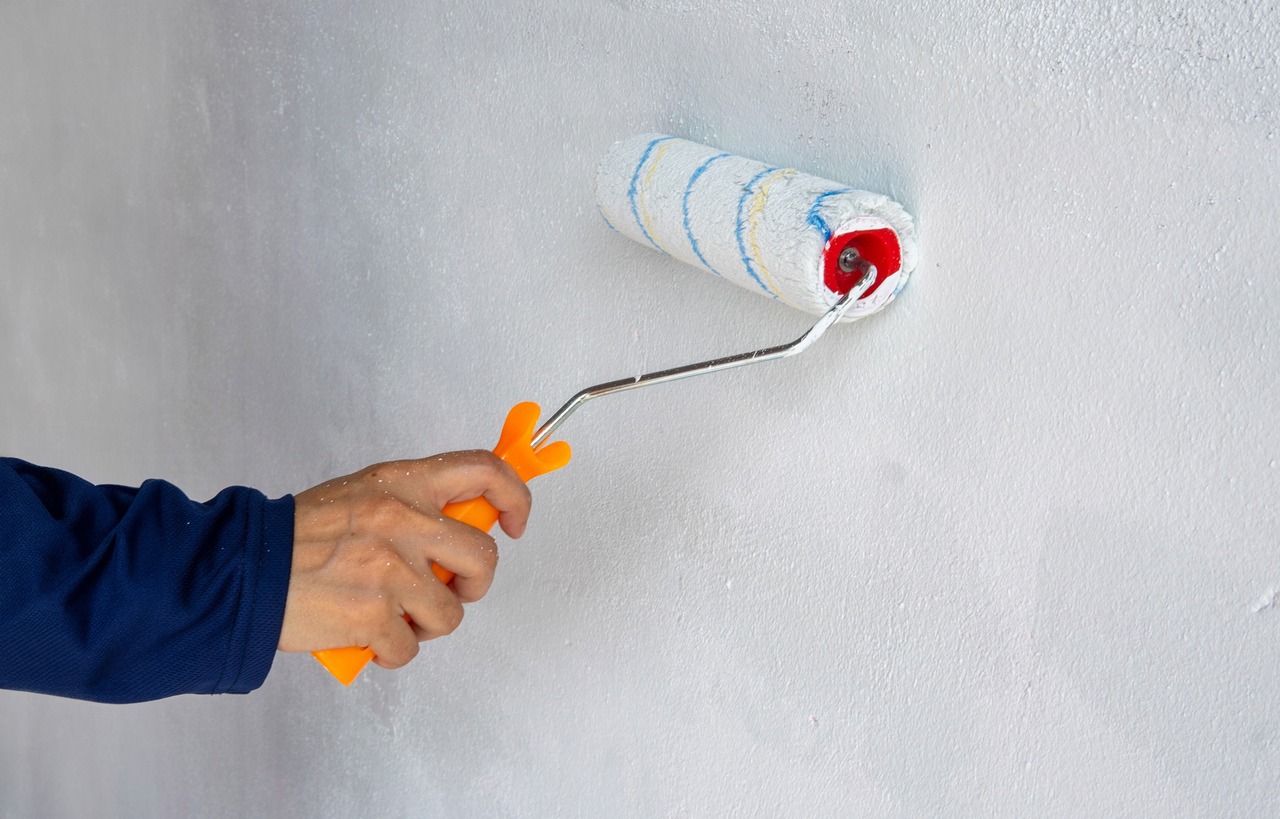Giving your business a fresh and attractive look is essential to maintaining a professional and appealing environment. This will continue to attract new customers and retain current patrons.
Refurbishing your commercial building enhances functionality, aligns it with current branding, and complies with safety or regulatory standards. It also boosts employee morale by creating a fresher, more comfortable workplace, which can improve productivity.
What is commercial painting?
Commercial painting involves painting large-scale buildings and spaces such as offices, retail stores, factories, and institutions. It’s important because it enhances the appearance, protects surfaces from wear and tear, and can align with a company’s branding.
Differences between residential and commercial Painting
Residential painting focuses on homes, using techniques and materials suitable for smaller spaces, while commercial painting handles larger, more complex projects. Commercial painting often requires specialized equipment, high-durability paints, and coordination around business operations.
Importance of proper planning and execution in commercial projects
Effective planning and execution in commercial painting are crucial to minimizing business disruptions, ensuring safety, and meeting project deadlines. Proper coordination also ensures quality results that adhere to building codes and client specifications.
Understanding the scope of commercial painting
- Types of commercial properties: Commercial painting projects can involve various property types, including offices, retail stores, industrial buildings, warehouses, schools, hospitals, and hotels. Each property type presents unique requirements based on its function and design.
- Complexity of commercial painting: Commercial painting tends to be more complex than residential projects due to factors like larger surface areas, multiple stories, and different materials (e.g., metal, concrete, and stucco). Additionally, coordination with business operations, managing safety protocols, and sometimes adhering to stricter timelines add complexity to these projects.
- Key factors to consider:
- Building size: Larger buildings require more extensive planning for labor, equipment, and paint quantity.
- Type of material: Different materials (e.g., brick, steel, drywall) require specific preparation techniques and coatings.
- The structure’s age: Older buildings may need more surface preparation, repair, or special coatings to preserve the integrity of the material.
- The building’s purpose: The space’s intended use affects color choices and the types of paint (e.g., durable, easy-to-clean finishes for hospitals or food-grade paint for kitchens).
Proper planning and expertise are essential for delivering high-quality commercial painting results.
The pre-painting process: Preparation is key
- Surface inspection: Before painting, inspect the surface for any issues like cracks, mold, or peeling paint. Identifying these problem areas ensures the surface is sound and ideal to accept paint. Ignoring such issues can lead to poor adhesion, uneven finishes, and shorter paint durability.
- Repairs and cleaning: Prepping the surface by repairing cracks, sanding rough spots, and cleaning with pressure washing results in a smooth, professional-looking finish. A clean and well-prepared surface allows the paint to adhere correctly, preventing future peeling, bubbling, or cracking.
- Choosing the right paint: Different environments require specific types of paint. High-traffic areas may need durable, scrubbable paints, while exteriors require weather-resistant coatings to withstand elements. Interior paints may focus on aesthetics and indoor air quality, with options for low-VOC paints to reduce fumes.
- Permits and regulations: Certain painting jobs may require permits, especially for exterior work, depending on the project scope. Ensuring compliance with local codes and obtaining necessary approvals avoids legal issues and ensures the work meets safety and environmental standards.
Choosing the right commercial painter
When choosing the right commercial painter, there are several important factors to consider:
- Credentials: Look for a contractor with proper licensing and insurance, which ensures compliance with regulations and protects you from liability. Also, check for references from past commercial projects to verify their reliability and quality of work.
- Experience with large-scale projects: Commercial painting often involves larger, more complex jobs than residential painting. Ensure the painter has experience with large-scale projects, including the ability to manage crews and meet tight deadlines.
- Familiarity with commercial-grade materials and equipment: A skilled commercial painter should have expertise in using commercial-grade materials and equipment, ensuring durability, safety, and compliance with specific industry standards. It is crucial for handling the demands of commercial environments, such as high-traffic areas or specialized coatings.
These criteria ensure that your project is completed efficiently and to a high standard.
Project timeline and budget
Project timeline in commercial painting
1. Factors influencing project duration:
- Size of the project: Larger spaces or multiple buildings will naturally take longer, depending on square footage and complexity.
- Weather conditions: Rain, humidity, or extreme temperatures can delay outdoor painting and potentially affect drying times.
- Surface conditions: Preparation work, such as cleaning, repairs, or priming rough or damaged surfaces, can extend the project timeline.
Budgeting in commercial painting
1. Estimating labor and material costs:
- Labor costs: These depend on the size of the team, experience levels, and regional labor rates. The time needed for surface prep, priming, and multiple coats of paint should be considered.
- Material costs: The quality of paint and required materials like primer, protective coverings, and tools impact the overall cost. Surface area calculations help estimate the quantity of paint needed.
Importance of clear communication
Regular updates and setting clear expectations with the client are essential to manage timelines, especially if delays (e.g., weather) occur. This helps to build trust and ensure satisfaction with the project’s progress and completion date.
Techniques and tools used in commercial painting
In commercial painting, various tools and techniques ensure efficiency, durability, and safety.
Tools used:
- Airless sprayers: Provide fast and even coverage on large surfaces.
- Scaffolding: Allows safe access to high or hard-to-reach areas.
- Industrial-grade rollers: Used for precision and heavy-duty applications.
Specialized techniques:
- Exterior painting: Focuses on weather resistance using durable coatings and techniques like power washing for surface prep.
- Interior painting: Requires careful attention to detail, often with low-VOC paints, to maintain indoor air quality.
Safety measures:
- Protective gear: Includes masks, gloves, and eye protection.
- Safety equipment: Harnesses, guardrails, and proper ventilation help ensure the safety of workers and occupants during the job.
Weather and environmental considerations
- Weather impacts: Exterior commercial painting can be affected by temperature, humidity, and precipitation. Cold or wet conditions can prevent paint from adhering properly, leading to uneven finishes or peeling. Ideal weather includes mild temperatures and dry conditions.
- Best seasons: Spring and fall are often the best times for painting, especially for brick, concrete, or metal buildings, as temperatures are moderate, allowing for optimal paint drying and adhesion.
- Eco-friendly paints: Low-VOC and eco-friendly paints help meet environmental standards by reducing harmful emissions, improving air quality, and contributing to sustainability goals in commercial projects.
Challenges faced during commercial painting projects
During commercial painting projects, several challenges can arise:
1. Unexpected structural damage: Painters may discover damaged surfaces, such as cracks, mold, or water damage, that require repair before painting.
- Solution: Conduct thorough inspections beforehand and have contingency plans with repair teams on standby.
2. Delays: Weather, unanticipated repairs, or schedule conflicts with other contractors can cause delays.
- Solution: Build flexibility into the project timeline and maintain clear communication with all stakeholders to adjust schedules as needed.
3. Supply chain disruptions: Paint and materials may become unavailable due to supply shortages, delaying progress.
- Solution: Secure materials early and have backup suppliers to ensure minimal downtime.
Effective contingency plans, flexibility, and communication are crucial for managing these challenges and keeping projects on track.
Aftercare and maintenance tips
Importance of regular maintenance
Regular maintenance is crucial to extend the lifespan of a commercial paint job. Routine care helps prevent early signs of wear, fading, or peeling, which can detract from the business’s appearance and lead to costly repairs or repainting.
Tips for touch-ups, cleaning, and preventing wear
- Touch-ups: Keep leftover paint for minor touch-ups. Address scratches or scuffs promptly to maintain a consistent appearance.
- Cleaning: Use mild, non-abrasive cleaning solutions and soft cloths for regular cleaning. Avoid harsh chemicals that can damage the finish.
- Preventing wear: Use protective measures like furniture pads, wall protectors, and regular inspections to spot and address high-traffic areas vulnerable to damage.
Maintenance contracts for commercial clients
Offering maintenance contracts can be a value-added service for commercial clients. Regular inspections, cleaning, and touch-ups as part of the agreement can ensure that the paint job remains in optimal condition over time, reducing the need for frequent repaints and prolonging the paint’s life.
Conclusion
Successful commercial painting requires thorough preparation, choosing the right painter, clear communication throughout the project, and proper aftercare to ensure long-lasting results. Business owners are encouraged to invest in professional painting services to enhance their property’s longevity and aesthetic appeal, contributing to a positive and lasting impression.
Contact us today for a free consultation! Call Custom Painting, Inc. at 925-294-8062 or message us on our contact page. When you work with Custom Painting, you can rely on our commercial painters, who are dedicated to providing long-lasting, quality results, always backed by our warranty!



